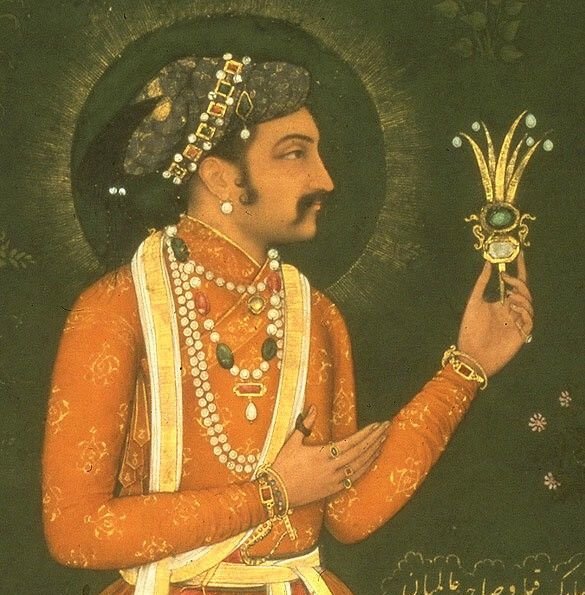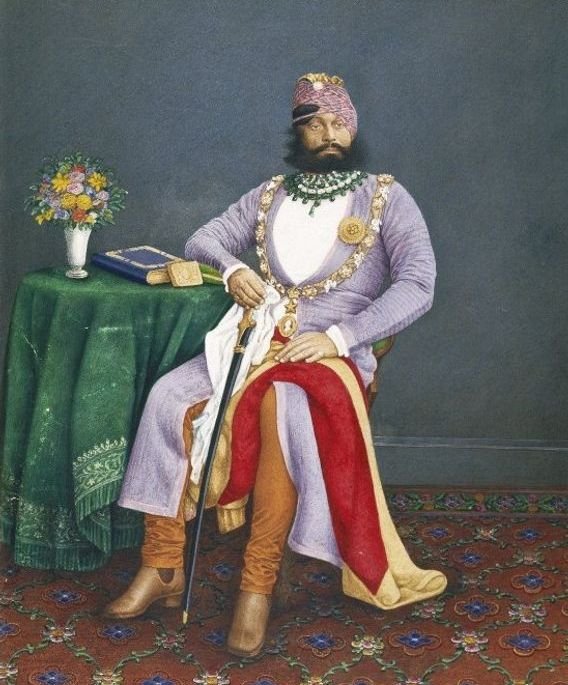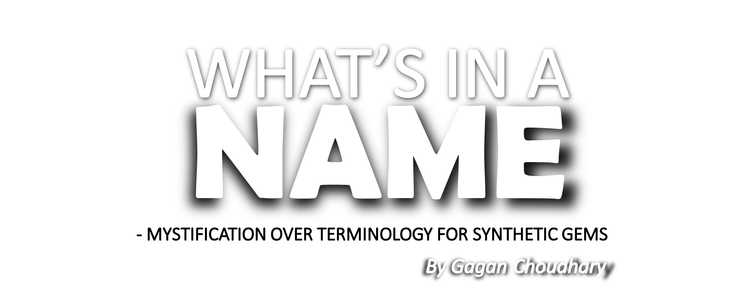The romance and mystique of emeralds.

“Emerald of dark green colour, or
the colour of a spring meadow
Of a soft glow….
Hewn in different ways
Endowed with qualities of shape, which
Shoot diffusions of light
When the sun’s rays fall on it….”
– Garuda purana (4th to 10th century AD)
There is magic in emeralds, one almost ‘as old as civilization’. It is the green charm of the earth and of life itself. Possibly, it is the realization that these rare and strangely beautiful were among the first gems people have sought and coveted.
Emeralds have been known since 3500 B.C; the first reliable source of emerald is found in Egyptian records, but exactly when Egypt’s emerald deposits were first exploited is still a subject of controversy. Knowledge and use of emerald in India may be even older than in ancient Egypt, but it lacks convincing documentation. In ancient Rome, green was the colour of Venus, the goddess of beauty, love, sex and fertility. And today also, this colour occupies a high esteem in many cultures and religions.
In the 15th century, the Spanish and Portuguese were responsible for bringing this ‘green fire’ to India, and it became a favourite of the royalty, especially the Mughal ruler, Shah Jahan, the builder of the Taj Mahal. Possibly, the Spanish and Protuguese economies survived on the sale of emeralds. Evidently, no real source of emerald existed in India during ancient times except for a few mines located around Ajmer region, near Jaipur which were re-discovered in the 1940s.
Emeralds have been documented in Vedas and Mahabharata, but no Indian deposits. This indicates that the emeralds have been bought to India from outside and most probably from Egypt; the mines are located at Mount Zebarah, also known as Cleopatra mines.
The word ‘Emerald’ itself is derived from the Sanskrit word “Marakata”, where ‘Mara’ means desert and ‘Kata’ means sea-coast. This is related to the ancient Cleopatra mines situated between the Nile and the Red Sea in southern Egypt.
The emerald has been used amongst the Hindus from the time immemorial; being held so high in esteem that even any other flawless gem assuming the form of an emerald is highly prized. The Vedas contain frequent references to precious stones, including emerald, the most important being the Rig-Veda, which, is dated to about 1500 – 1000 BC. S.M. Tagore in his treatise on gems ‘Manimala’ describing the ‘City of Dwarka’, writes that the “pillars are made up of emeralds”.
While Roman chronicler, Pliny describes emerald in his epic, Natural History, “the sight of no other color is more agreeable…because nothing greens greener. Furthermore emeralds are the only gemstones which fill the eyes without saturating them…eyes will be refreshed and restored by looking at them.”
Traditionally, emeralds are worn to promote healing and enhance love and contentment. According to legends, emeralds strengthen the owner’s memory, quicken the intelligence and assist in predicting the future. Emerald symbolizes spring, rebirth, hope, peace, and tranquility; believe to endow its wearer with an accommodating and pleasing temperament. This is one of the reasons why maharajas or rulers had a vast emerald collection in their treasury.
A story grew over several thousand years that Indian dealers bought Egyptian emeralds from somewhere and on asking from the dealers about the origin, the reply was “Old Mine”. Over the centuries larger and fine emeralds entered the country and dealers either did not know or did not reveal where the gems originated; the old mine fable grew to lost mine fable. Analyses of few wonderful specimens from the emerald treasures in private collection revealed that the emeralds have actually been originated from Colombia.
Colombian emerald deposits were known to the world when Spain conquered Colombia in the 16th century. Most of the emerald treasures of the Indian rulers, kings, etc are from Colombia. There was a continuous competition amongst the Indian rulers to acquire these legendary gems in their collection, where, emeralds were being used in necklaces, carvings, rings, pendants, crowns, etc.
Today, emerald is mined out at number of localities including Zambia, Brazil, Sandawana (Zimbabwe), Russia, Panjshir (Afghanistan), Swat Valley (Pakistan), Madagascar, etc.
The kings and the conquerors in the history had a real obsession for emeralds, which can be judged by the emerald treasury in their collection. When speaking about the emerald or jewel treasury, the first names appear is the ‘Nizams of Hyderabad’ along with ‘The Mughals’, who had a wonderful collection of exclusive specimen of emeralds. Mughals were great artists, and many exclusive emeralds have been recorded from their treasury; words from the Holy Scriptures were often carved on large emerald crystals.
The Few Obsessed….


(Image: www.asianart.com)

(Image: www.fineart-china.com)

(Image: www.brooklynmuseum.org)
….and their obsession…

The Mogul Emerald: One of the largest carved emeralds in the world weighing 217.80 carat and about 5 cm in length, found and cut in 1695. It was found in the Muzo mine of Colombia. On one side, the emerald is carved with a central rosette, poppy flowers and scrolling foliate detail, while on the other side, five lines of prayer, blessing Muhammad and the twelve Imams have been calligraphically inscribed. It used to be worn as a talisman with the inscription facing outward, and was mounted and secured by the drill holes on each side.
The inscription reads:
O Merciful One, O Compassionate One
O God
God bless Muhammad and ‘Ali
and Fatima and al-Husain
and al-Hasan and ‘Ali
and Muhammad and Ja’far
and Musa
1107
and ‘Ali and Muhammad
and ‘Ali
and al-Husaini and the steadfast Mahdi
(Image and translation source: www.columbia.edu)



(Image: Kalle Anka / http:/www.flickr.com)

(Image: Kalle Anka – www.flickr.com)


Above image: weight in carats
(Source: Jewels of the Nizams by Usha R Bala Krishnan)

(Source: http://orderofsplendor.blogspot.in/2011/05/tiara-thursday-empress-josephines.html )

(Source: The Emerald Book, Jaipur Jewellery Show)

(Source: The Dance of Peacock by Usha R Bala Krishnan and Meera Sushil Kumar)

(Source: The Emerald Book, Jaipur Jewellery Show)
There are many magnificent emeralds which have been taken away from India, some of which are still kept in the National Museum of Tehran, while the few remaining splendid pieces of jewels are a stark reminder of the wealth that has been lost – as a result of wars, plunder and loot. The history reveals that the rulers and princes were in attempt to prove their superiority over the others. For this, they even launched battles over other princely states in order to conquer their treasuries.
Right from the discovery of emerald to present day, emeralds have been prized possessions – whether by the royal families all over the world or the common man. The royalty adored and flaunted them.
Even today, there are number of high quality emeralds lying in private collection with the royal families, showing their continuous love for these beautiful gems. In addition, some incredible specimens and artifacts are present at museums throughout the world, such as, the Art History Museum in Vienna (Austria), the Kremlin in Moscow (Russia), the Museo del Oro in Bogota (Colombia), the American Museum of Natural History in New York, the British Museum of Natural History in London, the Museum of London, the Dresden in Germany, the National Bank of Iran in Tehran, etc.
The Museum of London is currently exhibiting an astonishing collection of jewels discovered from a cellar in 1912 on Cheapside in city of London , belonging to late 16th and early 17th century. The collection popularly known as ‘The Cheapside Hoard’, contains a magnificent emerald pocket watch, which is not only a striking example of beauty and craftsmanship, but also a symbol indicating the history about the collection (click here to read full report).
Today, technological development has facilitated the access to newer deposits and better exploitation of existing ones; hence, these mystical gems can be found with much ease. Therefore, matched suites and pairs of large sized emeralds are now often seen. But, we should not forget, “the uniqueness lies in the scarcity”.
References
Durlabhji Y., Fernandes S. & Durlabhji R. (2006) The Emerald Book, Jaipur Jewellery Show
Krishnan U.R.B & Kumar M.S (1999) Dance of the Peacock – Jewellery Traditions of India, India Book House Limited, Mumbai
Krishnan U.R.B (2001) Jewels of the Nizams, Department of Culture, Government of India, Shastri Bhavan, New Delhi
Ringsurd R. (2009) Emeralds – A Passionate Guide, Green View Press, California
Tagore S.M (1879) Manimala – A Treatise on Gems, Part I and II (New foreword by N.R.Barot)
Weldon R. & Jonathan Cathleen (2013) The Museum of London’s Extraordinary Cheapside Hoard, Gems & Gemology, Vol. 49, No. 3, pp 126-137
Visit us at Online Courses to know more.
Visit us at Online Courses to know more.
Visit us at Online Admissions Open
Call Us On +91 8879026633 / 7400497744 / 022-42906666 Courses to know more.
trending post









